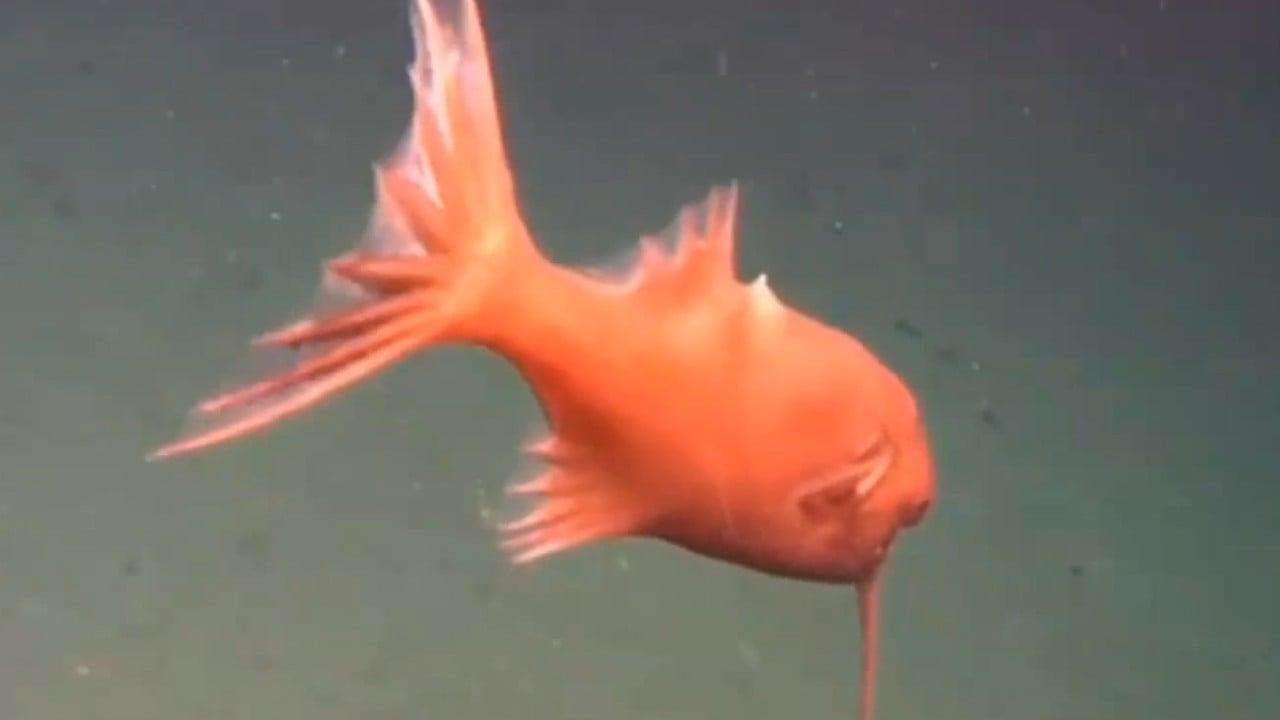
“On this recent trip, we’ve hugely increased the volume of data that we have about the Kermadec Trench vastly because of the operation by the [Chinese] Institute for Deep Sea Science and Engineering (IDSSE),” Bowden said.
He was on board the Chinese-made submersible Fendouzhe, or Striver, as it dived down to the trench last year, with the team exploring and collecting sediment, rocks, and biological and water samples for laboratory analyses.
[embedded content]
The creatures seen by the divers had clearly evolved to adapt to their specific marine environment: the anglerfish moving upside down possibly to draw prey on the seabed with the fishing rod-like lure on its head, the anemones’ exceptionally long stalks expected to help them free themselves if buried by a landslide, while the sea cucumbers were “no-frills” as they did not have to worry too much about growing spikes to appear unappetising, with predators thin on the ground.
Two years before, the Fendouzhe had made it to the bottom of the Mariana Trench – the deepest on Earth, going down to more than 10,000 metres.
“For us [New Zealand scientists] it was a huge opportunity,” Bowden said about the Kermadec expedition.
“The technological and scientific operation that the IDSSE has put together is world-class and it’s way beyond anything that we are currently able to do in New Zealand.
“It’s through collaborations like this that we can find out more about our natural environment and understand more about how it functions.”
Oceanic trenches are shaped like a funnel or cone, channelling dead organisms from the sunlit shallower depths towards the bottom, representing a food supply that deep-sea creatures mainly rely on. Large earthquakes – which are common in the Kermadec Trench – also help to shake mud and sediment, as well as organic matter, down to the bottom of the cone.
But the supply of such “food falls” can be unstable.
“The animals that live down there are adapted to that food availability. They might not get food for days, weeks, months, even years maybe, and then everything happens all at once,” Bowden said.
The animals have also developed ways to cope with living in total darkness, as sunlight travels to depths of only about 200 metres.
Bowden said he could see no light after 200 metres while going down in the submersible, but there were animals with skin or eyes that generated light through a chemical reaction called bioluminescence.
The area covered by the Kermadec Trench expedition and some of the species of deep-sea fauna seen on the expedition. Photo: Handout
Reproduction could also present a few hurdles in the dark deep sea, where animals live in fairly low density. They need a signalling method to identify themselves to potential mates – but those same signals could also get predators interested.
“There’s a whole life and death game going on down there,” Bowden said. “If you make a light sign to say, ‘here I am, come and talk to me’, it’s dangerous because the wrong people might arrive when you advertise yourself as dinner.”
Communication could also happen via other senses, like vibration through the water, smell or taste, he added.
“Amphipods, the tiny little scavengers [that feed on dead animals], will be able to smell the decomposing body of a whale from a long way off and swim towards it,” he said.
Speedy amphipods went after dead bodies and fish came in later to eat the amphipods, he added.
But fish do not live below 8,000 metres, because the enzymes and proteins needed for body functioning stop working when high water pressure affects the way the proteins fold.
Marine scientists are still looking into theories to explain why some animals live so deep down in the ocean – whether deep-sea creatures radiated out to become shallow animals, or shallow ones went deeper and started living there.
“Animals end up in places either [by] curiosity or just accident, just fate. Then the interesting thing is the survivorship part of it,” Bowden said.
“It’s all about making a living where you can.”


